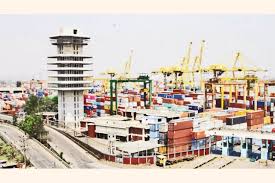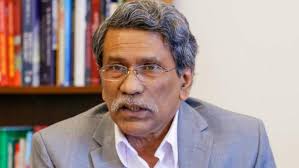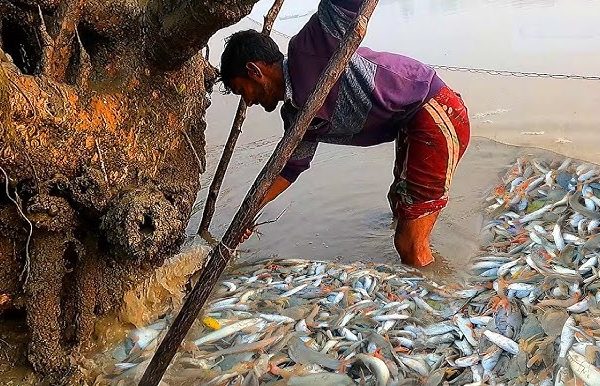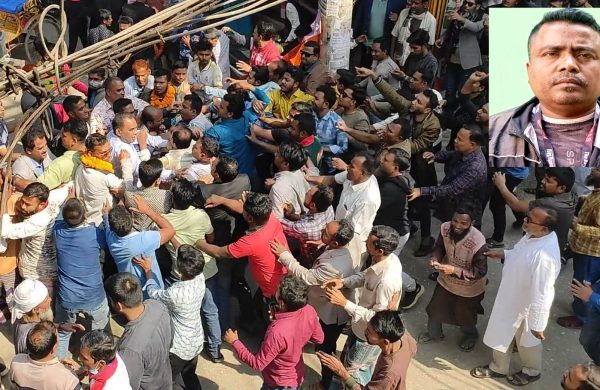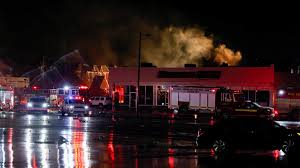Gas crisis likely to affect consumers in Ramadan
- Update Time : Wednesday, February 19, 2025
- 13 Time View

Staff Correspondent:
Gas production in the country has been declining steadily, and even with imports, it is not enough to meet the demand. As a result, the situation is being managed through rationing.
The priority list for gas supply includes the electricity and industrial sectors. As a result, many residential consumers are not receiving gas for most part of the day.
Officials say that even during the holy month of Ramadan, cooking stoves may be affected.
According to sources at the Bangladesh Oil, Gas, and Mineral Resources Corporation (Petrobangla), the daily demand for gas in the country is 3.80 billion cubic feet. If 3 billion cft can be supplied, the demand is almost met.
Currently, 2.60 to 2.65 billion cubic feet is being supplied. During Ramadan, this may increase to 2.80 to 2.85 billion cubic feet. Last year, the supply was approximately the same during the same period. However, this year, additional supply will be directed to the power sector compared to last year.
After receiving allocations from Petrobangla, six gas distribution companies supply gas to consumers.
Officials from two of these companies that plans are being made for gas and electricity supply for the upcoming Ramadan and summer seasons.
According to them, the supply of gas may increase by 200 to 250 million cubic feet during Ramadan, but all of this will go to the electricity sector. The industrial sector is already facing a shortfall in supply. Increasing gas supply to the electricity sector will put more pressure on industries.
As a result, there is little hope of improvement for residential areas, they added.
At one time, the country produced 2.70 billion cubic feet of gas daily. However, production level strated declining after 2018. To fill the shortfall, the previous Awami League government turned to importing LNG. They did not focus much on new gas exploration or increasing production.
Last year, the daily production was between 2 and 2.10 billion cubic feet. Now, the production has dropped to below 1.90 billion cubic feet, and LNG imports are supplying 700 to 750 million cubic feet. During Ramadan, Petrobangla plans to increase LNG imports to supply at least 900 million cubic feet daily.
The country’s largest gas field, Bibiyana, is also seeing a decline in production. Two years ago, it produced 1.30 billion cubic feet daily, but now it has dropped to 950 million cubic feet. Production at other major gas fields is also not meeting capacity.
Experts blame the neglect and inefficiency of the energy sector for the current situation. They say that despite having reserves, production cannot be increased due to a lack of technical planning and efficient technology.
Even though Bibiyana, with lower reserves, has seen a significant increase in production, no new gas discoveries have been made even after a decade of maritime boundary victory, they pointed out.
Essentially, the previous Awami League government increased LNG imports to take advantage of commission business, rather than focusing on increasing production. The interim government has started working on plans to increase production, but an increase will not happen anytime soon.
Petrobangla chairman Md Rezanur Rahman that 1.20 billion cubic feet gas will be supplied to the electricity sector. The supply to other sectors will remain the same as current levels. To achieve this, one additional LNG cargo is being brought during Ramadan, which may slightly increase supply to residential sectors.
TITAS CUSTOMERS WAIT FOR GAS AT NIGHT
Titas Gas Transmission and Distribution PLC, the largest gas distribution company providing gas to Dhaka, Gazipur, Mymensingh, and Narayanganj, has long been dealing with gas shortages for residential consumers.
Many customers have been calling Titas’ complaint centre due to a lack of gas in different areas of Dhaka. Most of the complaints are being filed from areas like Mohammadpur, Adabor, Mirpur, Old Dhaka, Kalabagan, Kathalbagan, Dhanmondi, Banshree, Khilgaon, and Bashundhara.
Most customers complain that they have to wait until nighttime to get gas in their stoves. As a result, many use LPG as an alternative for cooking, which increases their expenses.
Segufta Sharmin, a resident of Ring Road in Mohammadpur, that she gets the chance to cook either in the morning before going to the office or in the evening after returning from the office, but there’s never gas at those times. Gas is available only between 2:00 pm and 6:00 pm.
Deepa Rani Das, a resident of Kaderabad Housing, said, “We have to pay the gas bill every month. Gas comes after midnight and is gone before 6:00 am. I can’t cook.”
Rokonuzzaman from Kathalbagan said, “Gas only comes after everyone is asleep at night, and it’s gone before I wake up. I’m using an LPG cylinder to cook.”
Sadiqun Nahar from Khilgaon said, “Gas comes around 11:00 pm to midnight, but it’s gone before 6:00 am. Some days it disappears earlier. I’m worried about preparing Iftar and dinner during Ramadan.”
Officials from Titas Gas say there is little chance to increase residential gas supply. Titas has requested a daily supply of 1.96 billion cubic feet, but the actual demand is even higher.
They have been receiving 1.55 billion cubic feet, which may increase to 1.70 billion cubic feet during Ramadan, but all the additional gas will go to the power generation sector.
FERTILISER SUPPLY WILL DECREASE, ELECTRICITY WILL INCREASE
The energy ministry says that the gas crisis cannot be solved quickly. While the gas production is declining the ability to import LNG is limited. The global price of LNG is also rising. Due to unpaid gas bills, Petrobangla is struggling. They are unable to secure dollars regularly, and bills for LNG imports are not being paid, which is disrupting imports.
Currently, due to winter, the demand for electricity is low, but it will increase during Ramadan. The target for increasing electricity generation has been set. As a result, gas supply to the power sector will be increased, and supply to fertiliser factories will be reduced by half.
For the upcoming Boro season, the supply to fertiliser factories was increased to 140 to 150 million cubic feet, but this is gradually being reduced.
The Power Development Board (PDB) has requested 1.50 billion cubic feet of gas daily for electricity generation. Currently, they are receiving 900 to 920 million cubic feet.
Petrobangla plans to increase this supply to 1.20 billion cubic feet during Ramadan. However, after electricity, the industrial sector will be prioritised, and the supply to industries must at least be maintained at current levels.
Titas Gas officials reiterated that there is little chance of increasing the gas supply to residential sectors. They have requested 1.96 billion cubic feet daily, but the actual demand is even higher. Currently, they are receiving 1.55 billion cubic feet.
There are 4.3 million residential gas customers in the country. Of these, 400,000 use prepaid meters. They pay for the gas they use, with an average bill of less than Tk 500 per month. The remaining 3.9 million customers pay a fixed monthly bill of Tk 1,080 for two stoves, regardless of whether they get gas or not.
M Shamsul Alam, the energy adviser of the Consumers Association of Bangladesh (CAB), that gas prices are increasing while the supply of LNG remains limited.
He pointed out that though no customer receives the gas they need, they continue to pay their bills.
Such dishonest business practices by government institutions should be investigated, he stressed.



